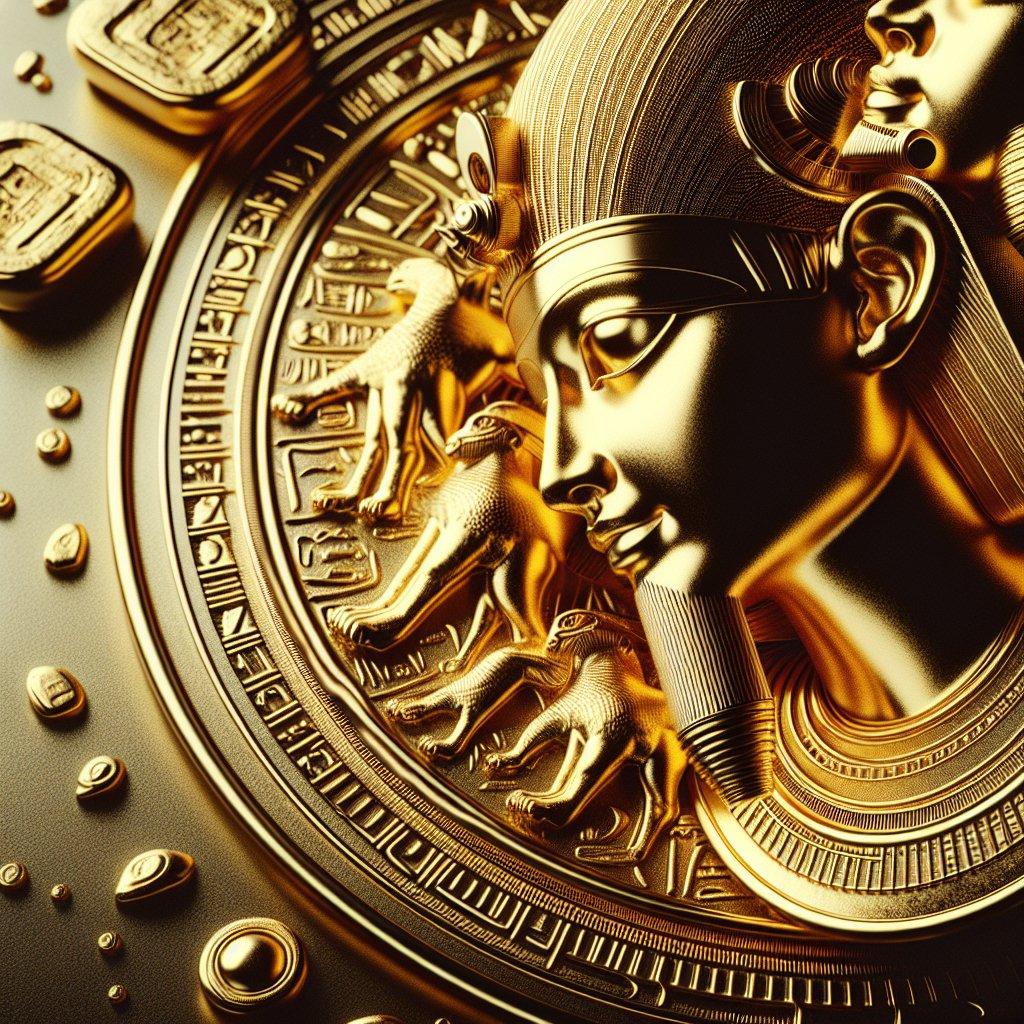Gold has been a symbol of power and wealth throughout history, and its significance in ancient Egypt is a testament to its enduring allure. The ancient Egyptians revered gold not only for its beauty and rarity but also for its symbolic connection to the divine. This article explores the multifaceted role of gold in ancient Egyptian society, examining its economic, religious, and cultural significance.
The Economic Role of Gold in Ancient Egypt
In ancient Egypt, gold was more than just a precious metal; it was a cornerstone of the economy. The Egyptians were among the first civilizations to mine and utilize gold extensively. The Nile River, with its rich alluvial deposits, provided a plentiful source of gold, which the Egyptians extracted using rudimentary yet effective techniques. Gold mining was a state-controlled activity, and the pharaohs held a monopoly over its production and distribution.
The economic importance of gold in ancient Egypt cannot be overstated. It was used as a medium of exchange, a store of value, and a means of accumulating wealth. Gold was not used as currency in the modern sense, but it played a crucial role in trade and commerce. The Egyptians traded gold with neighboring civilizations, such as the Nubians and the Mesopotamians, for goods and resources that were scarce in Egypt. This trade network helped to establish Egypt as a dominant economic power in the ancient world.
Gold also played a vital role in the internal economy of Egypt. It was used to pay workers, artisans, and soldiers, and it was a key component of the tribute system that supported the pharaoh’s court. The wealth generated from gold mining and trade allowed the pharaohs to finance monumental building projects, such as the construction of pyramids and temples, which further solidified their power and influence.
The Religious and Cultural Significance of Gold
Beyond its economic value, gold held profound religious and cultural significance in ancient Egypt. The Egyptians believed that gold was the flesh of the gods, particularly the sun god Ra, and it was associated with immortality and the afterlife. This belief was reflected in the extensive use of gold in religious artifacts, jewelry, and funerary items.
Gold was a prominent feature in the burial practices of the ancient Egyptians. The most famous example is the burial mask of Tutankhamun, which is made of solid gold and adorned with precious stones. This mask, along with other gold artifacts found in the young pharaoh’s tomb, underscores the belief that gold could ensure a safe passage to the afterlife and eternal life among the gods.
The use of gold in religious ceremonies and temple decorations further highlights its spiritual significance. Temples dedicated to the gods were often adorned with gold leaf and gold-plated statues, symbolizing the divine presence and the pharaoh’s role as the intermediary between the gods and the people. Gold was also used in the creation of amulets and talismans, which were believed to offer protection and bring good fortune to their wearers.
Gold as a Symbol of Power and Status
In ancient Egyptian society, gold was a symbol of power and status. The pharaohs, as the earthly representatives of the gods, were the primary possessors of gold, and their wealth was a reflection of their divine authority. The accumulation and display of gold were essential aspects of the pharaoh’s image, reinforcing their position as the supreme rulers of Egypt.
The elite class of ancient Egypt also used gold to signify their status and wealth. Nobles and high-ranking officials adorned themselves with gold jewelry, such as necklaces, bracelets, and rings, to demonstrate their social standing. Gold was also used in the decoration of their homes and tombs, further emphasizing their privileged position in society.
The use of gold as a status symbol extended beyond the borders of Egypt. The pharaohs used gold as a diplomatic tool, gifting gold artifacts to foreign rulers to establish alliances and demonstrate Egypt’s wealth and power. These gifts served as a testament to Egypt’s prosperity and its ability to influence the political landscape of the ancient world.
The Legacy of Gold in Ancient Egypt
The legacy of gold in ancient Egypt is evident in the enduring fascination with this precious metal. The treasures of Tutankhamun’s tomb, discovered in 1922, captivated the world and reignited interest in the opulence and grandeur of ancient Egyptian civilization. These artifacts, along with countless others, continue to be studied and admired for their craftsmanship and historical significance.
Gold’s role in ancient Egypt also provides valuable insights into the civilization’s social structure, economy, and religious beliefs. The extensive use of gold in art and architecture reflects the Egyptians’ advanced metallurgical skills and their ability to harness natural resources to create objects of beauty and significance.
Today, gold remains a symbol of wealth and power, much like it was in ancient Egypt. Its enduring value and allure are a testament to its unique properties and the cultural significance it has held throughout history. The story of gold in ancient Egypt serves as a reminder of the timeless human fascination with this precious metal and its ability to shape societies and economies.












